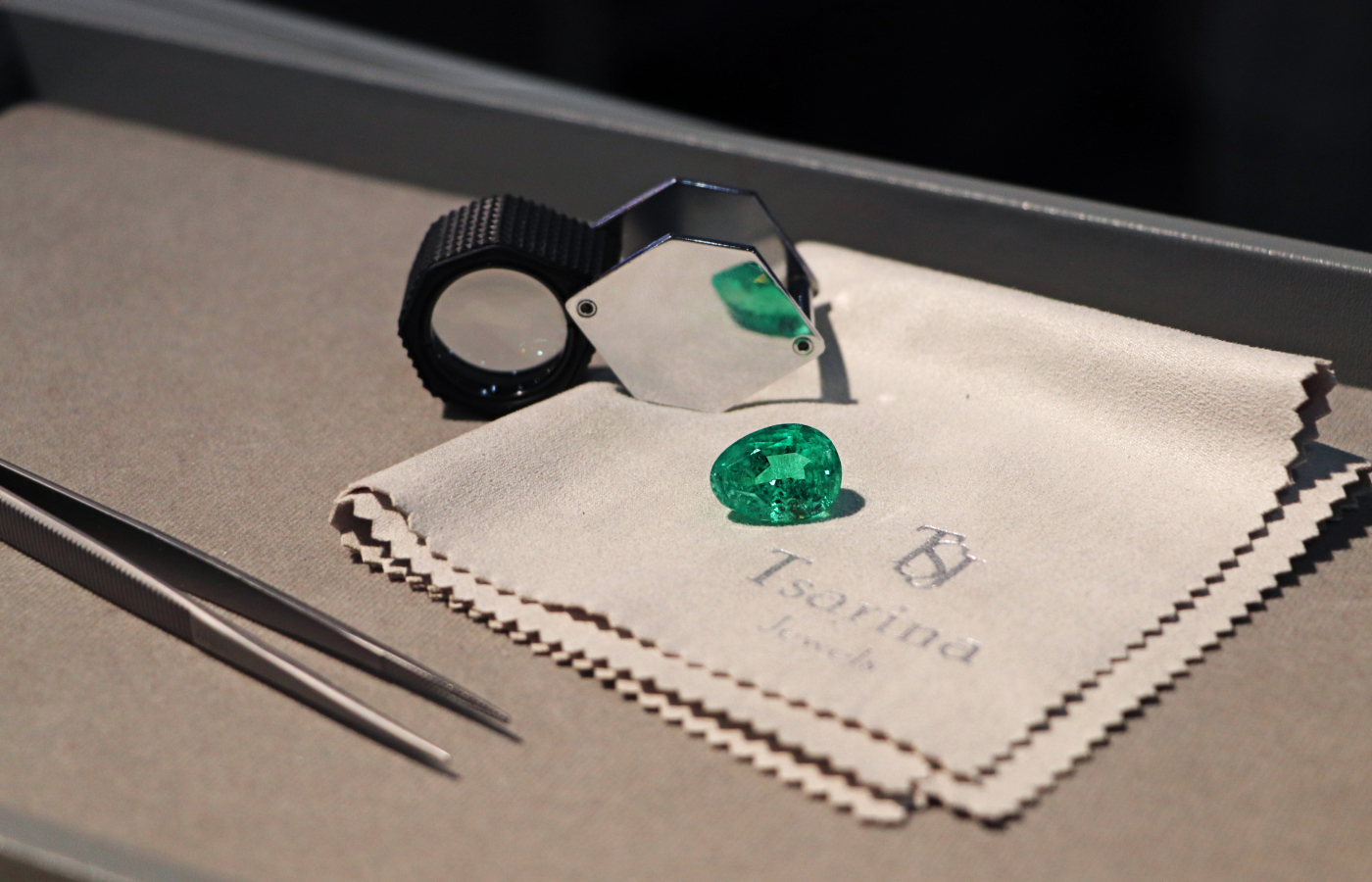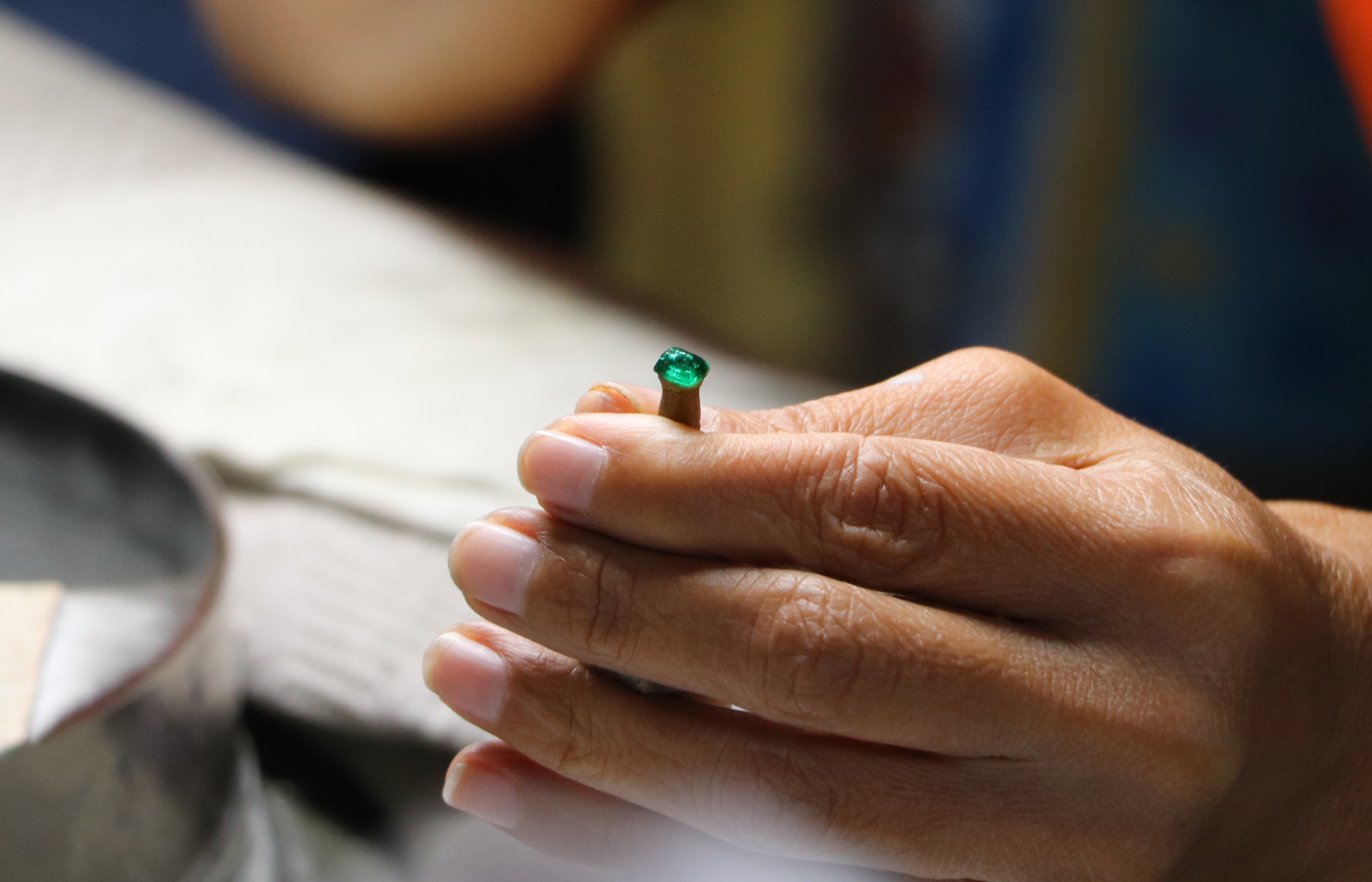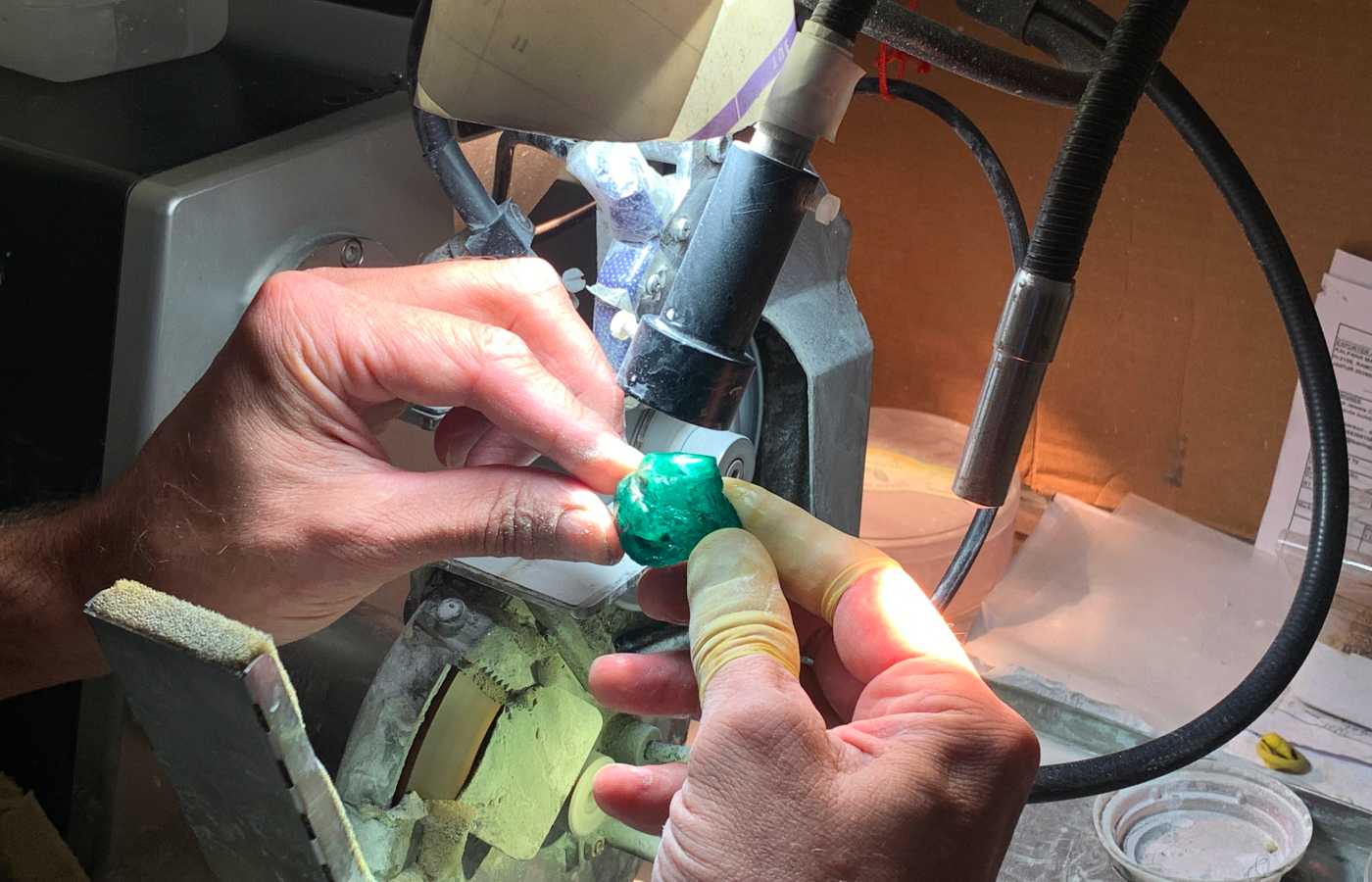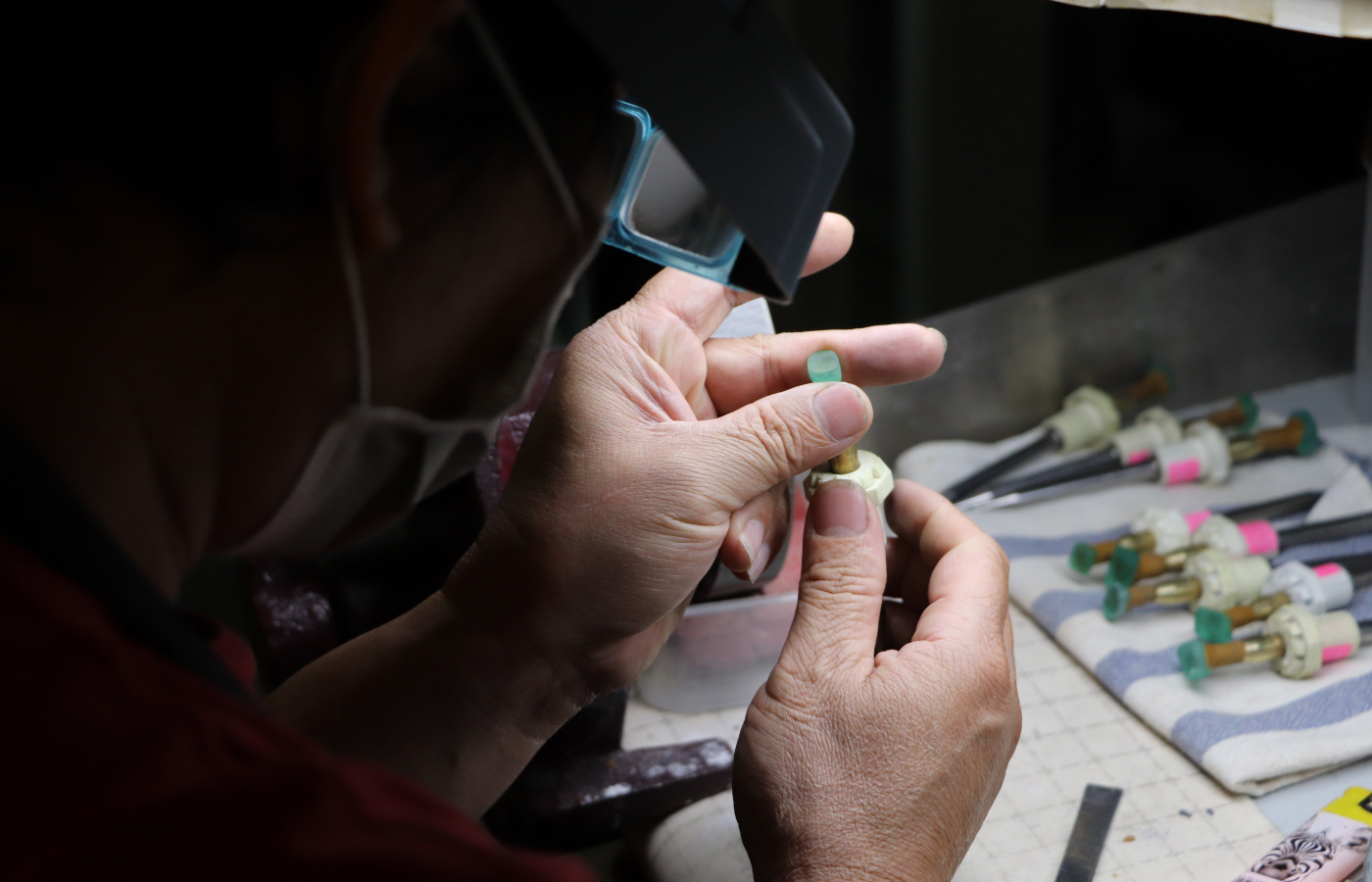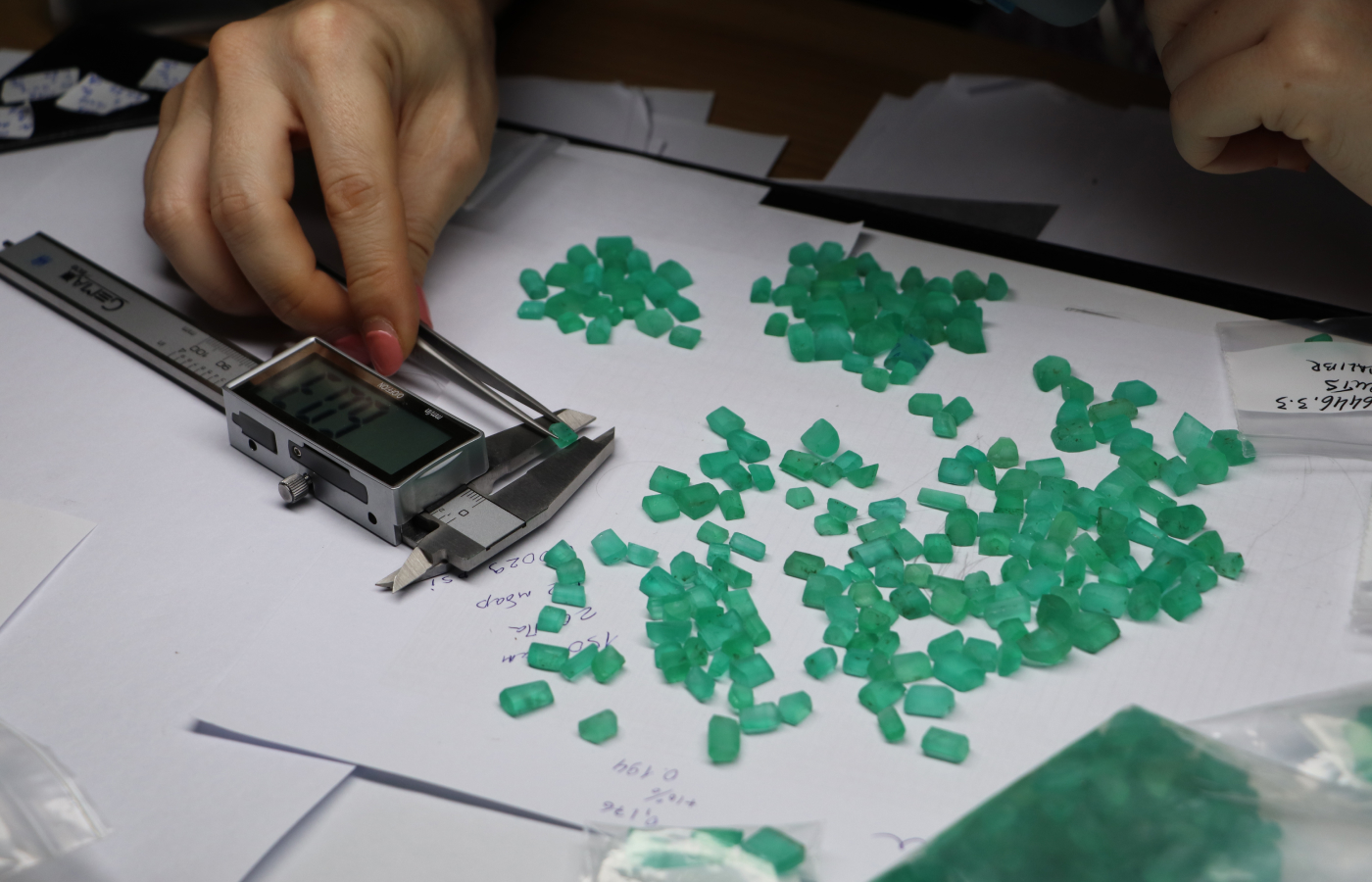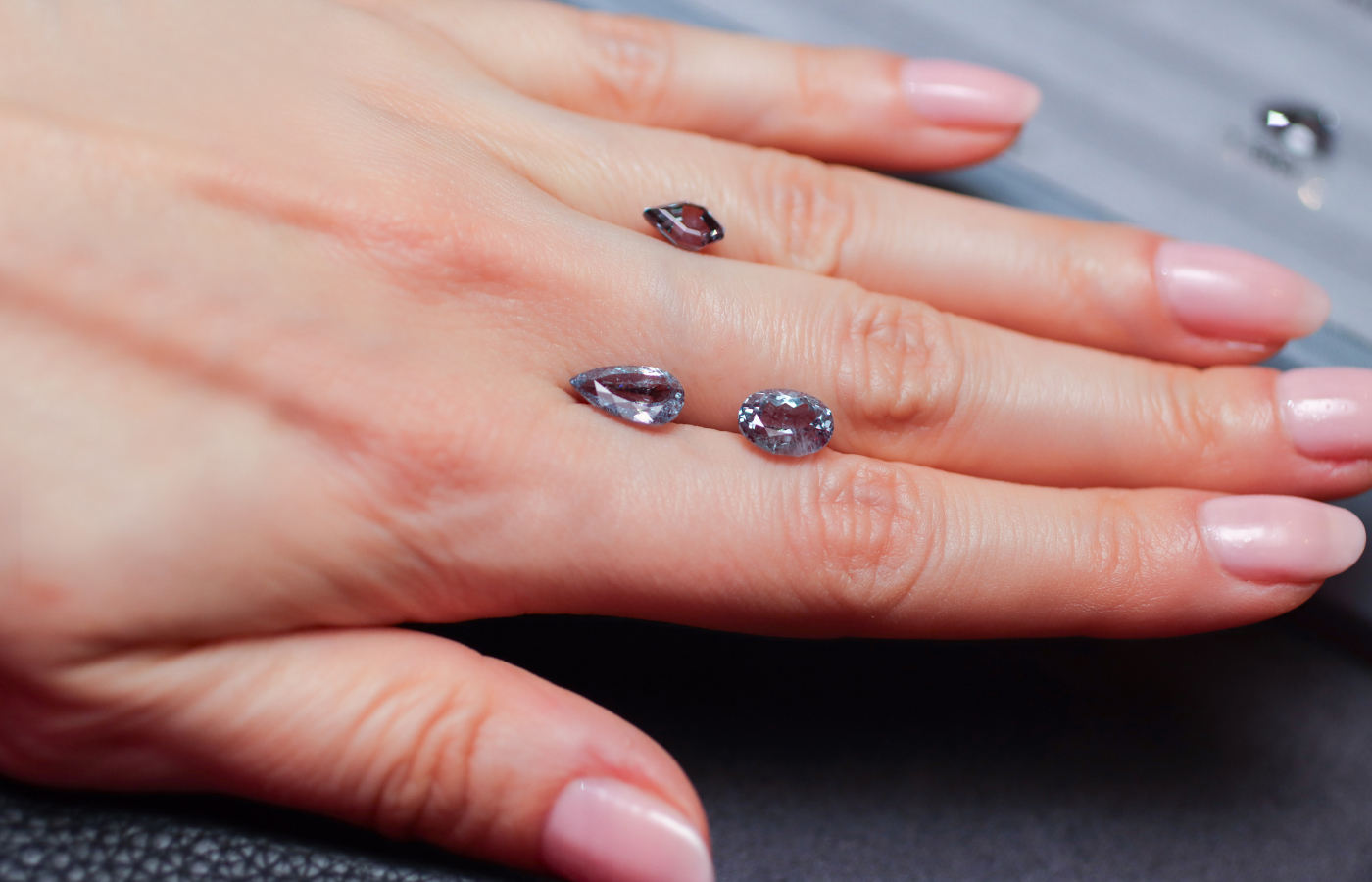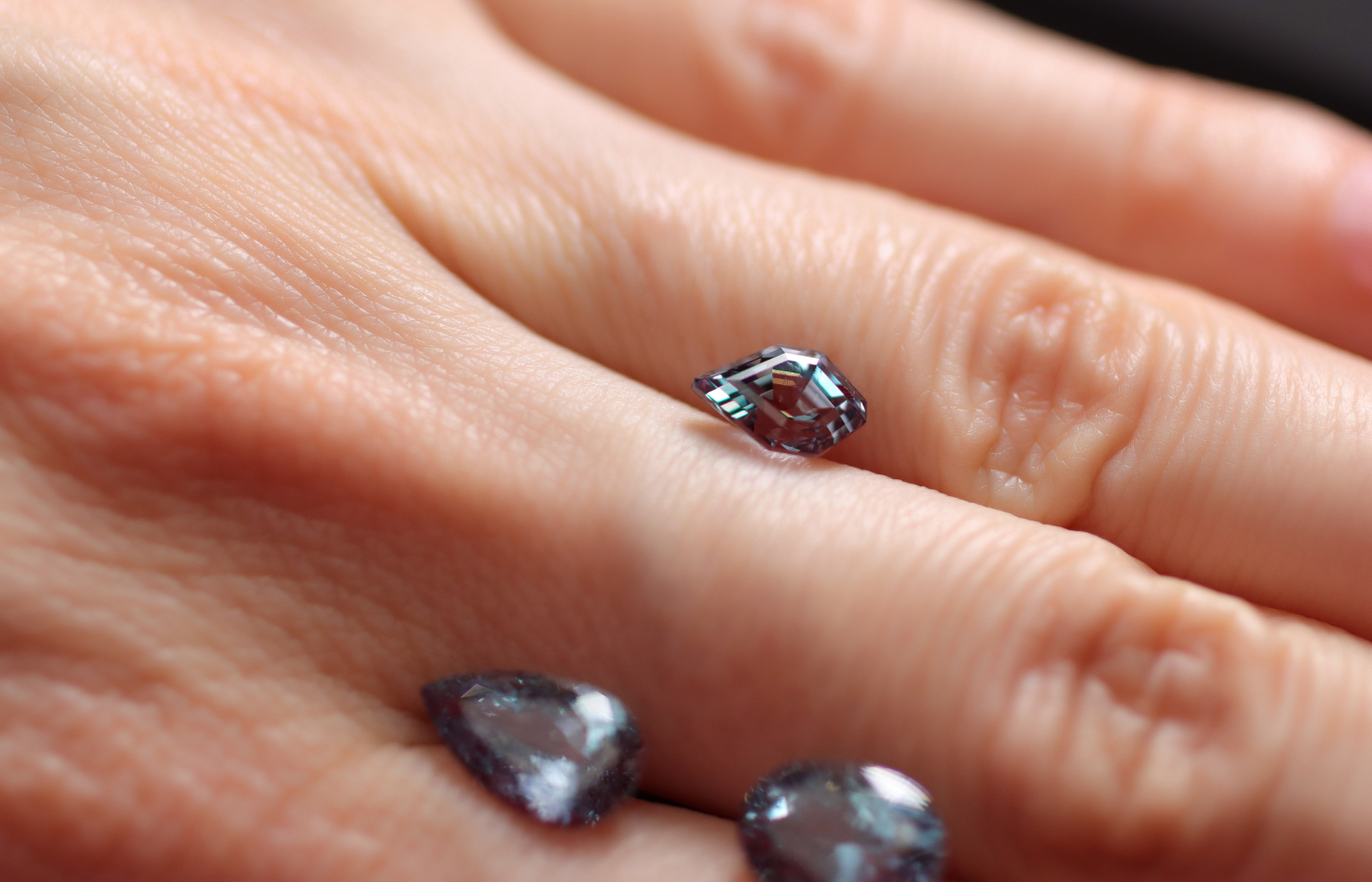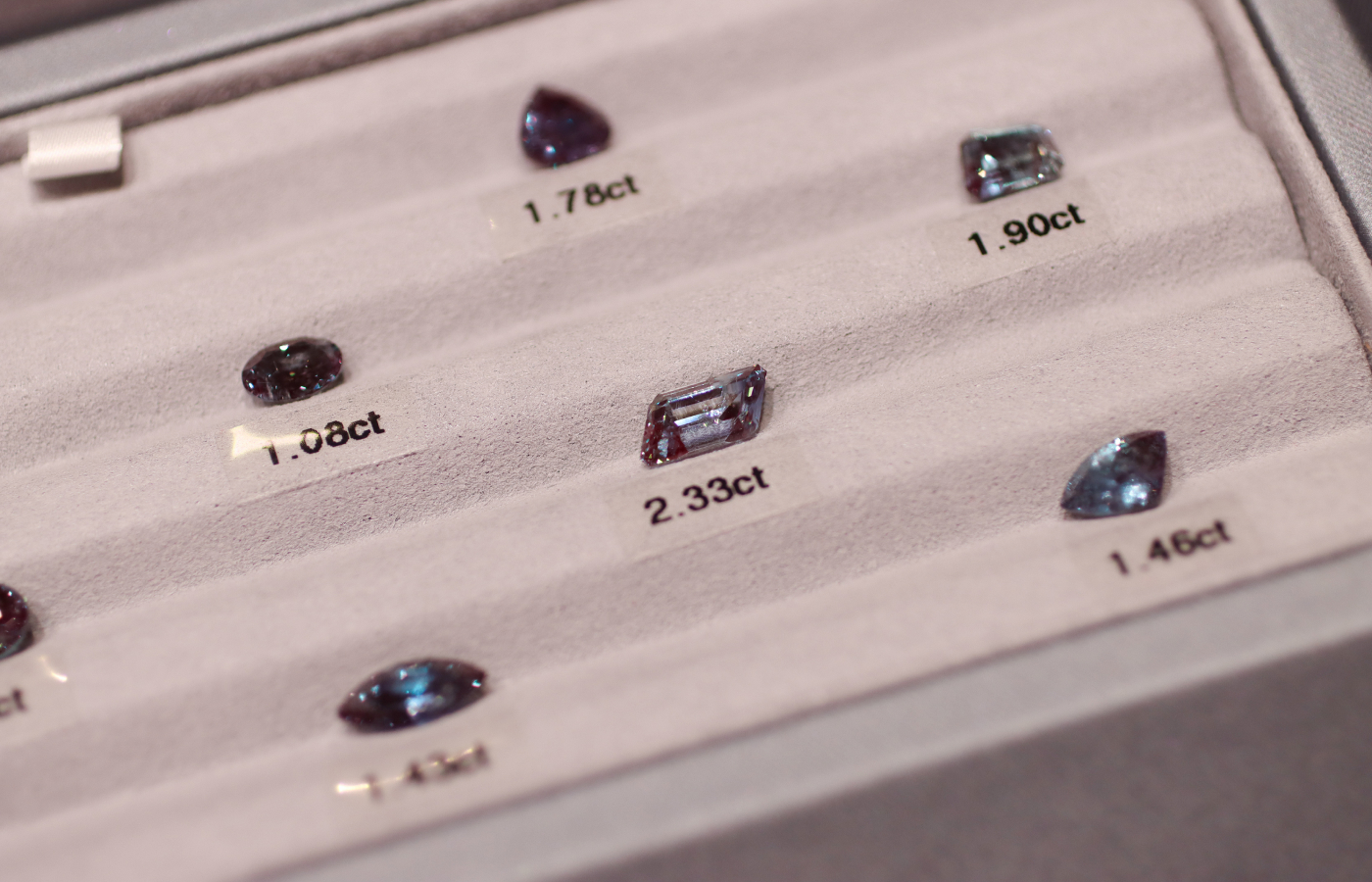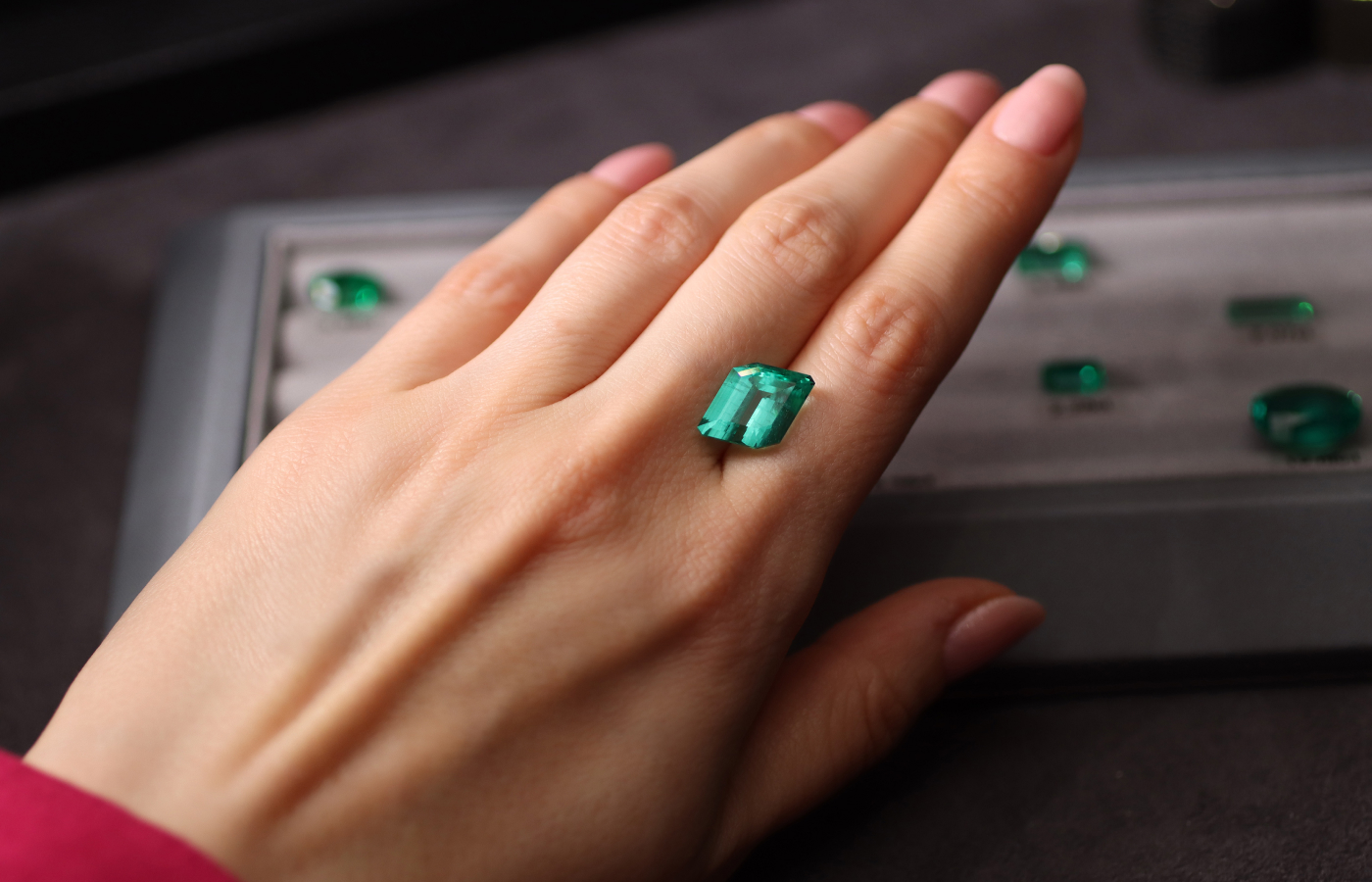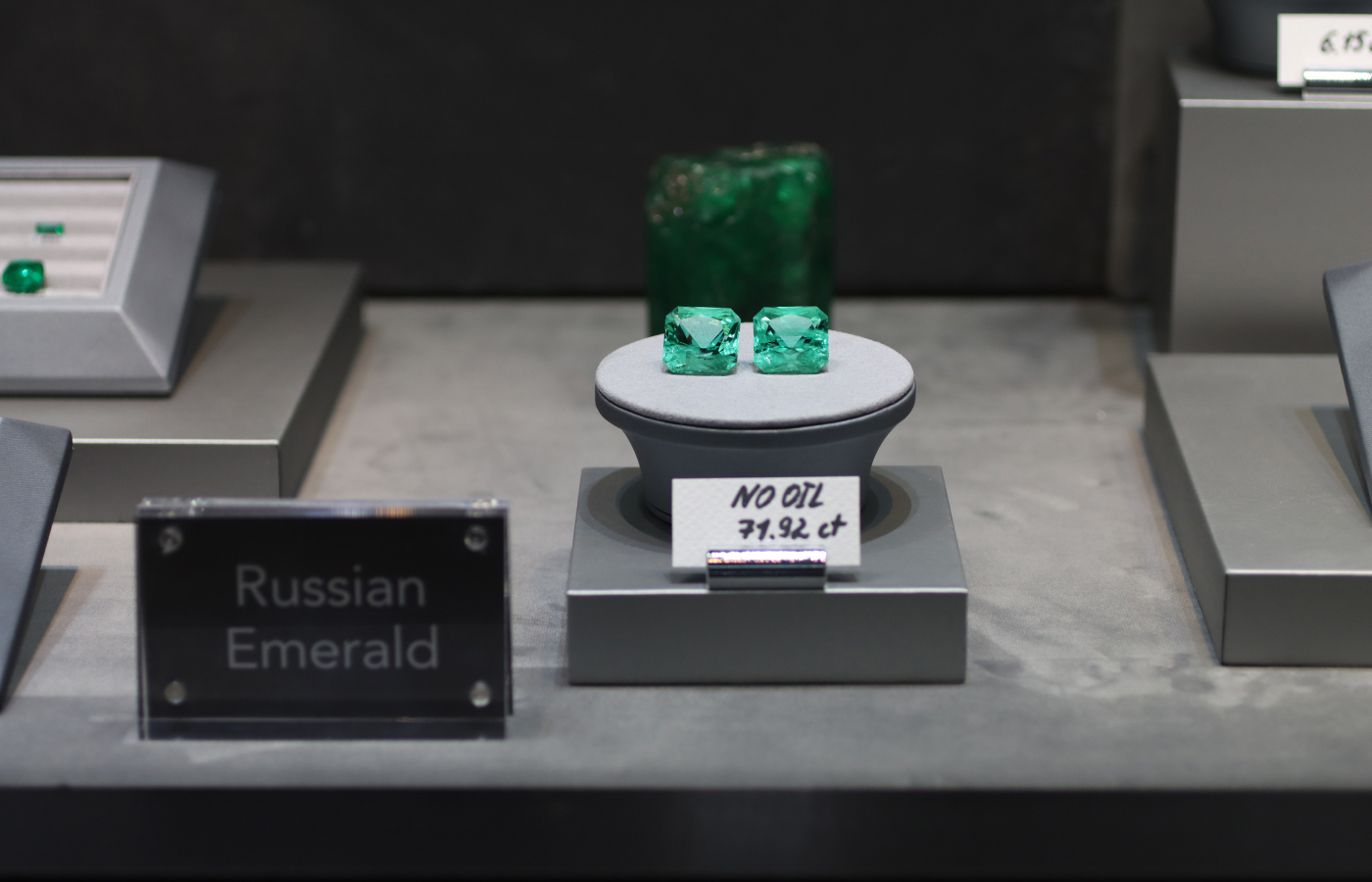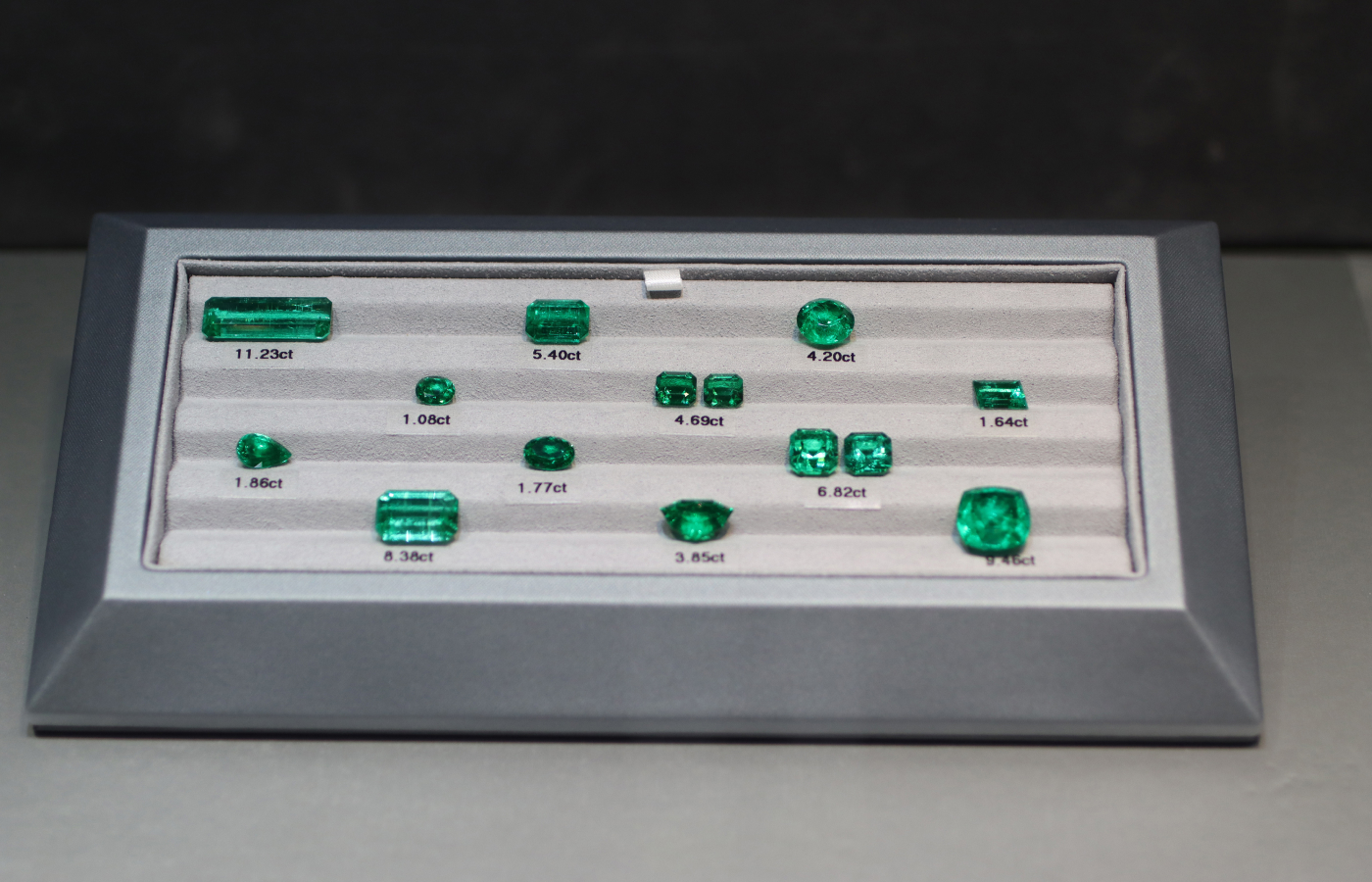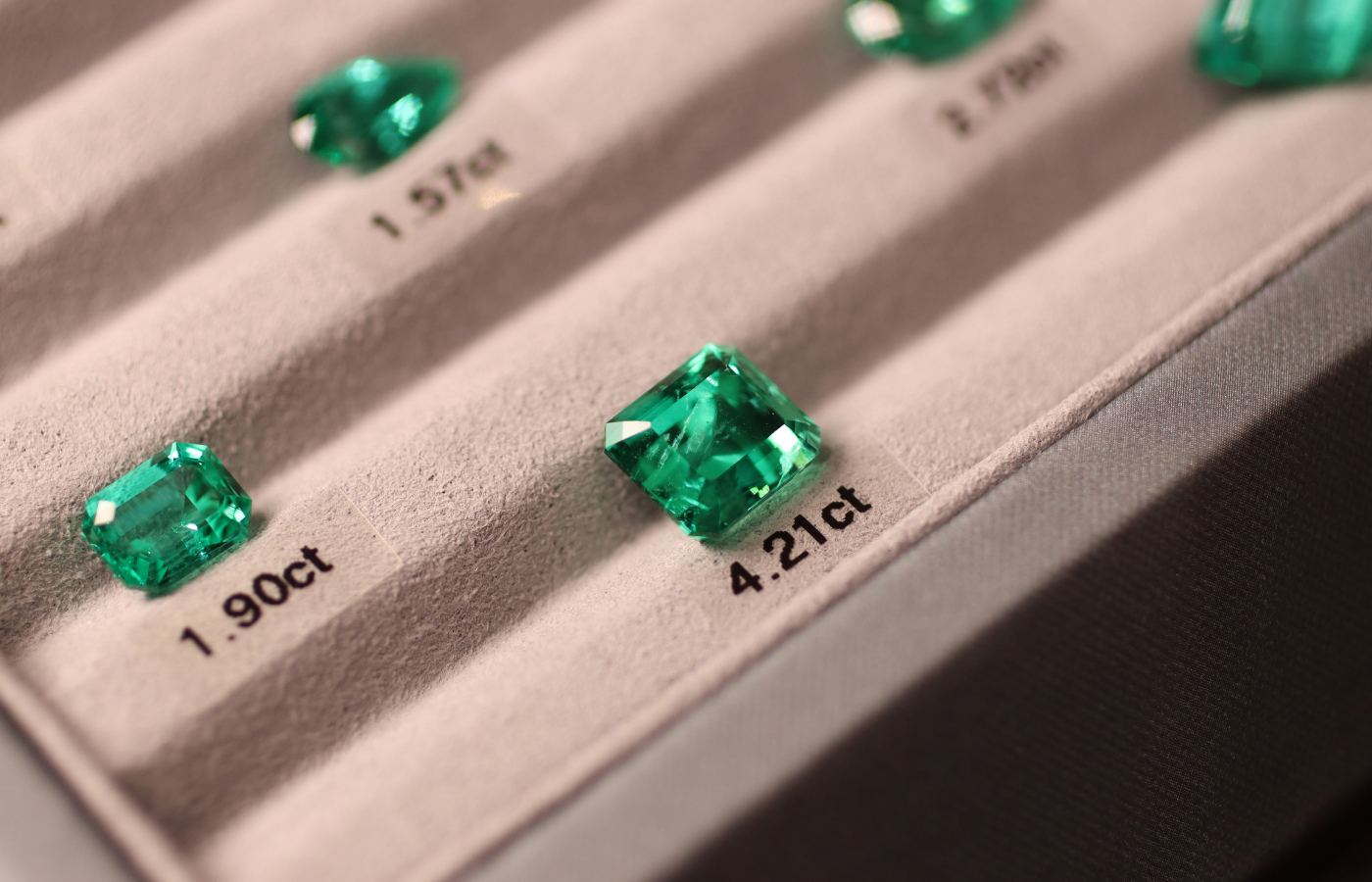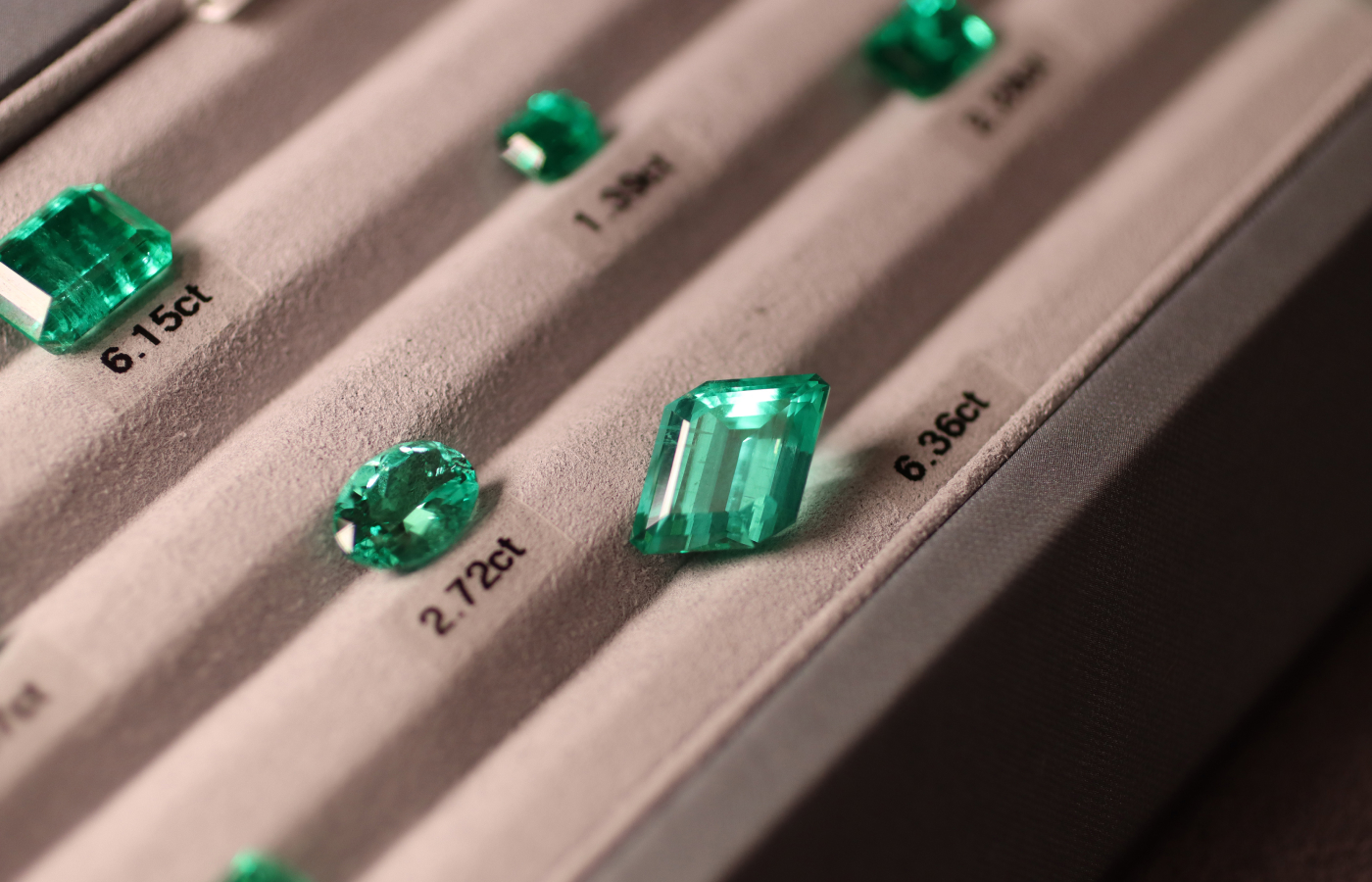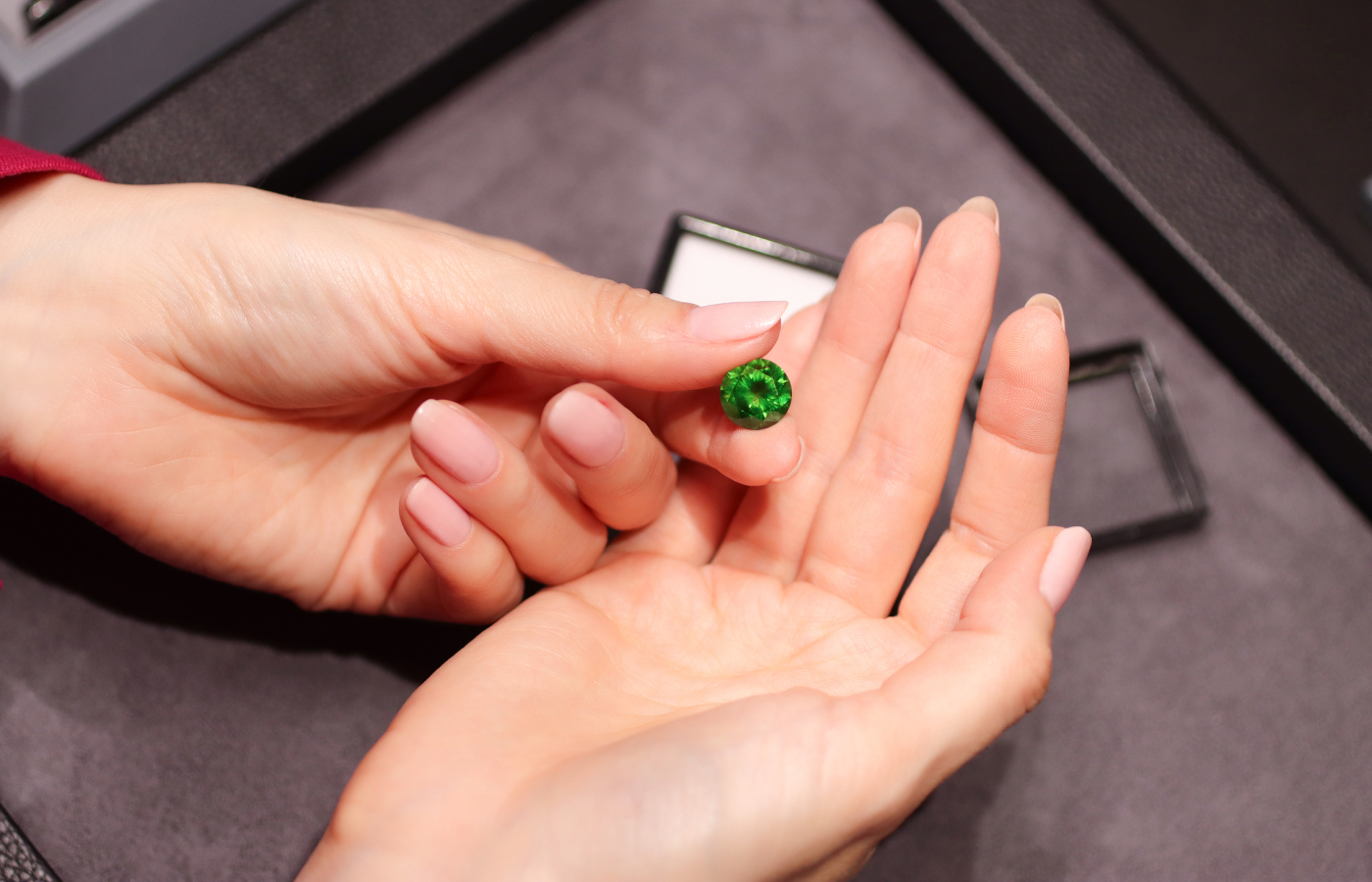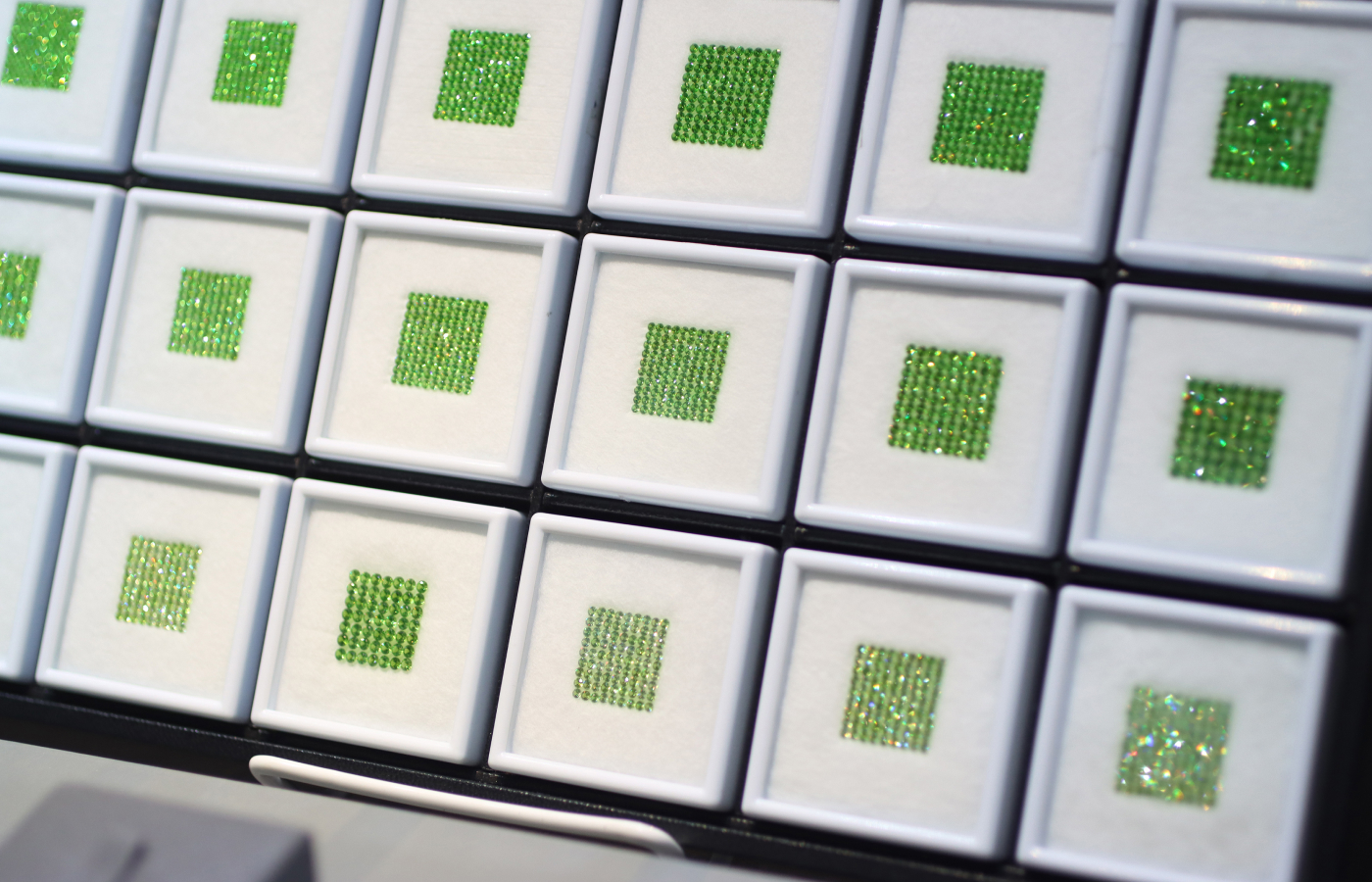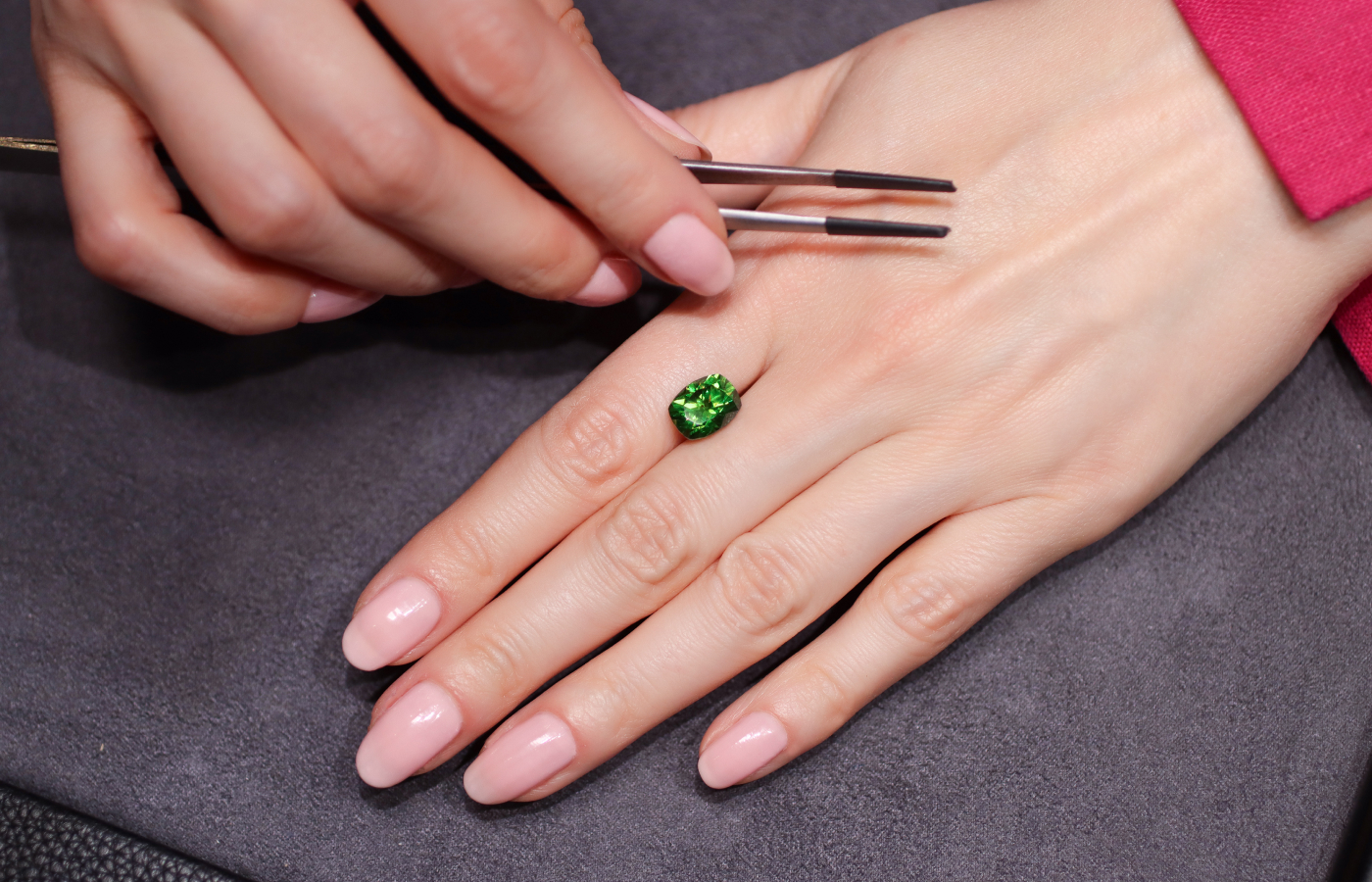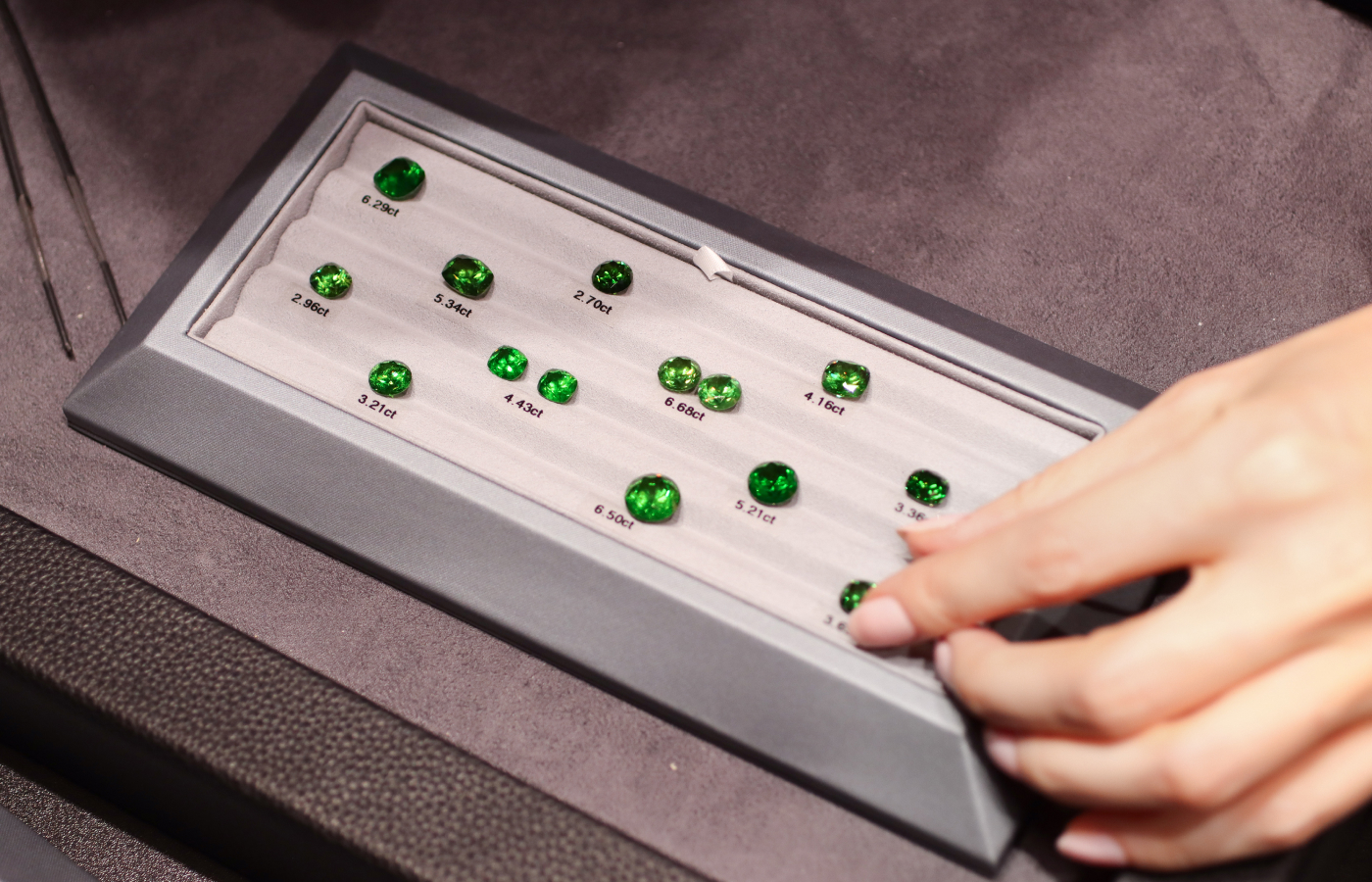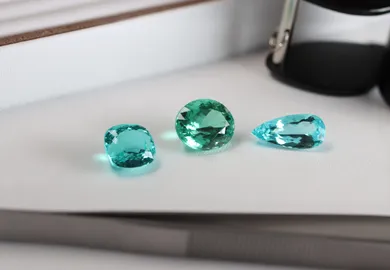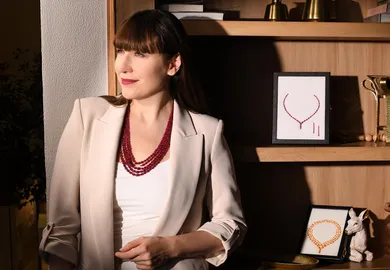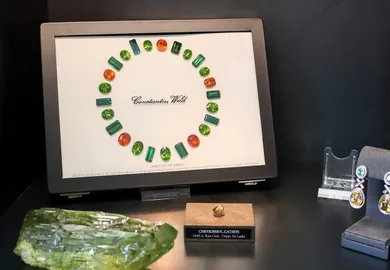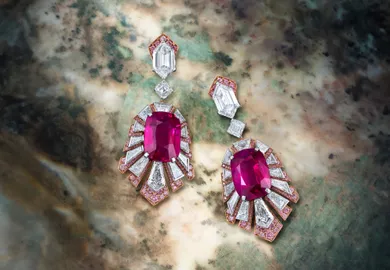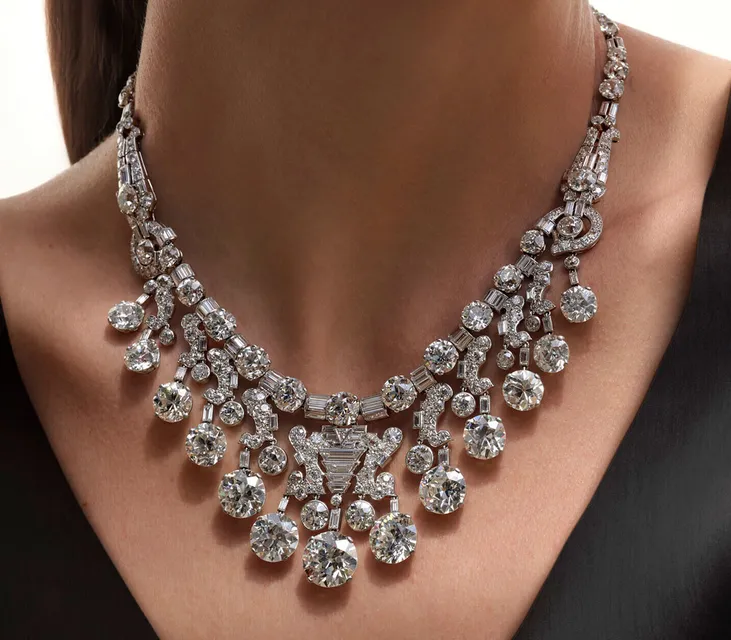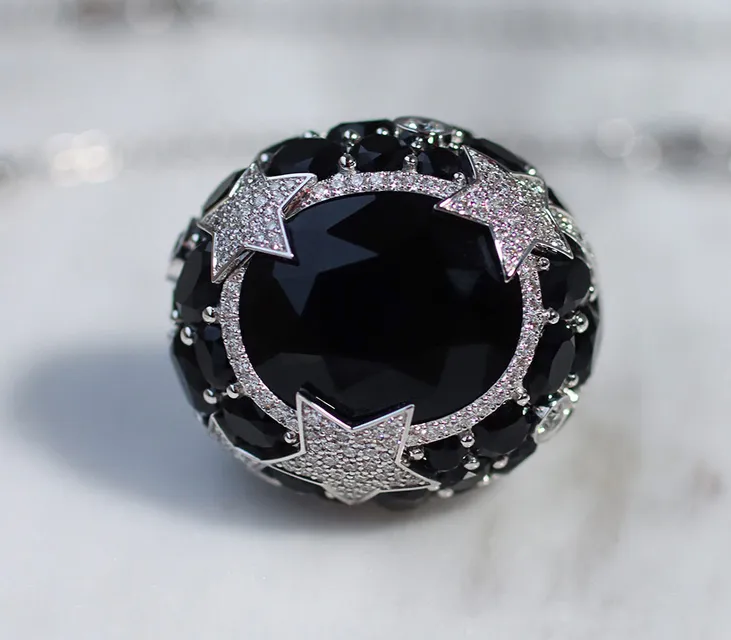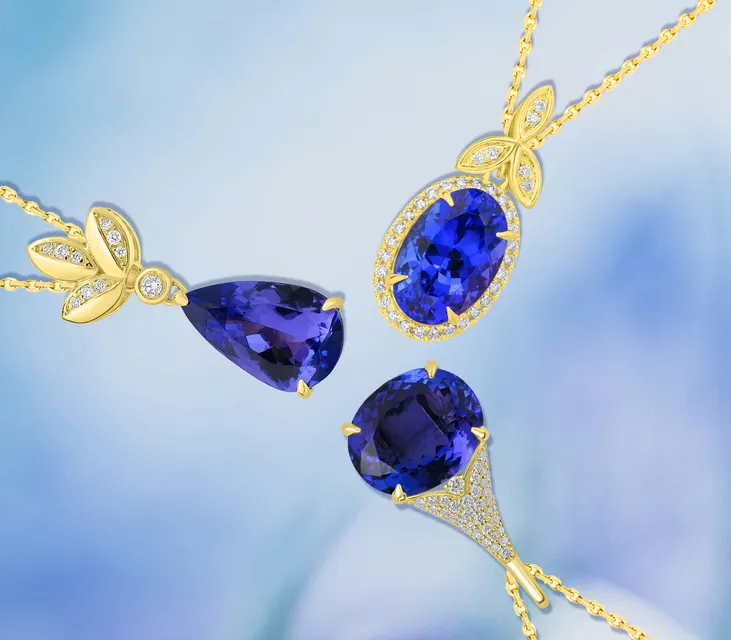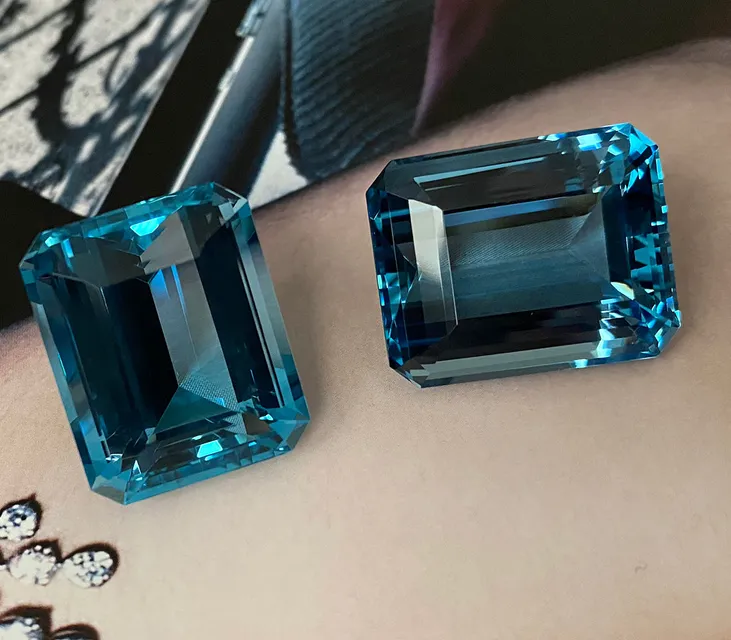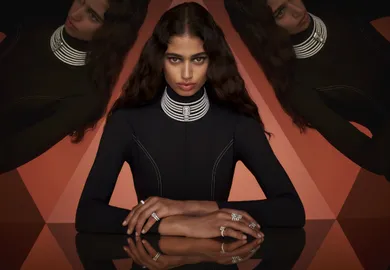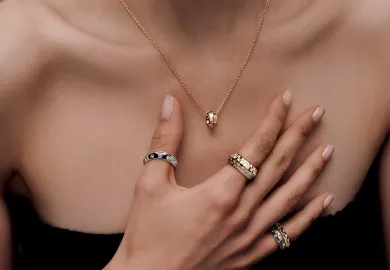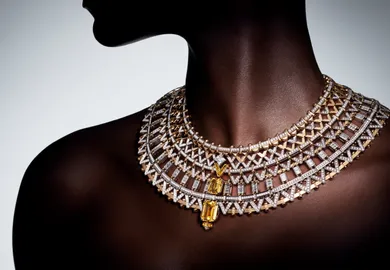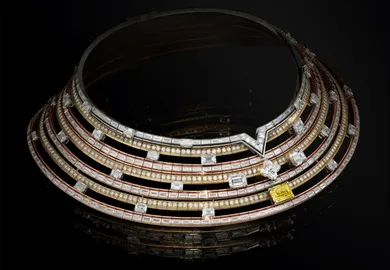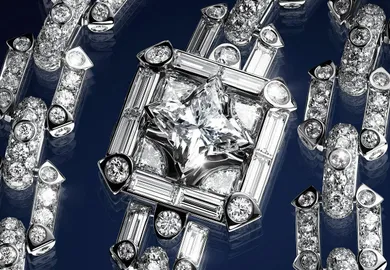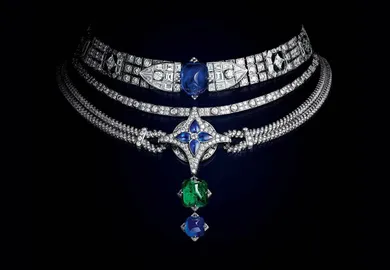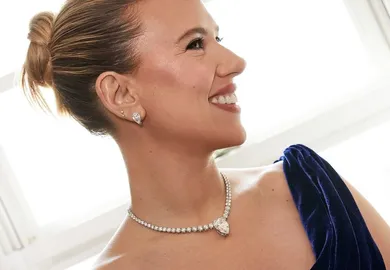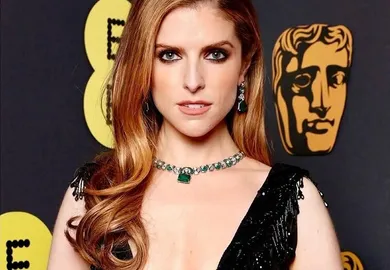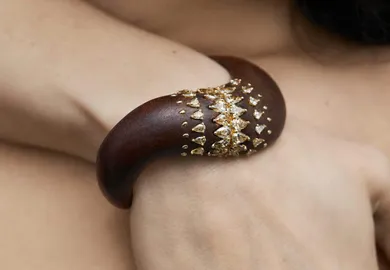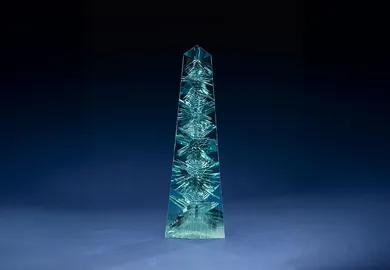
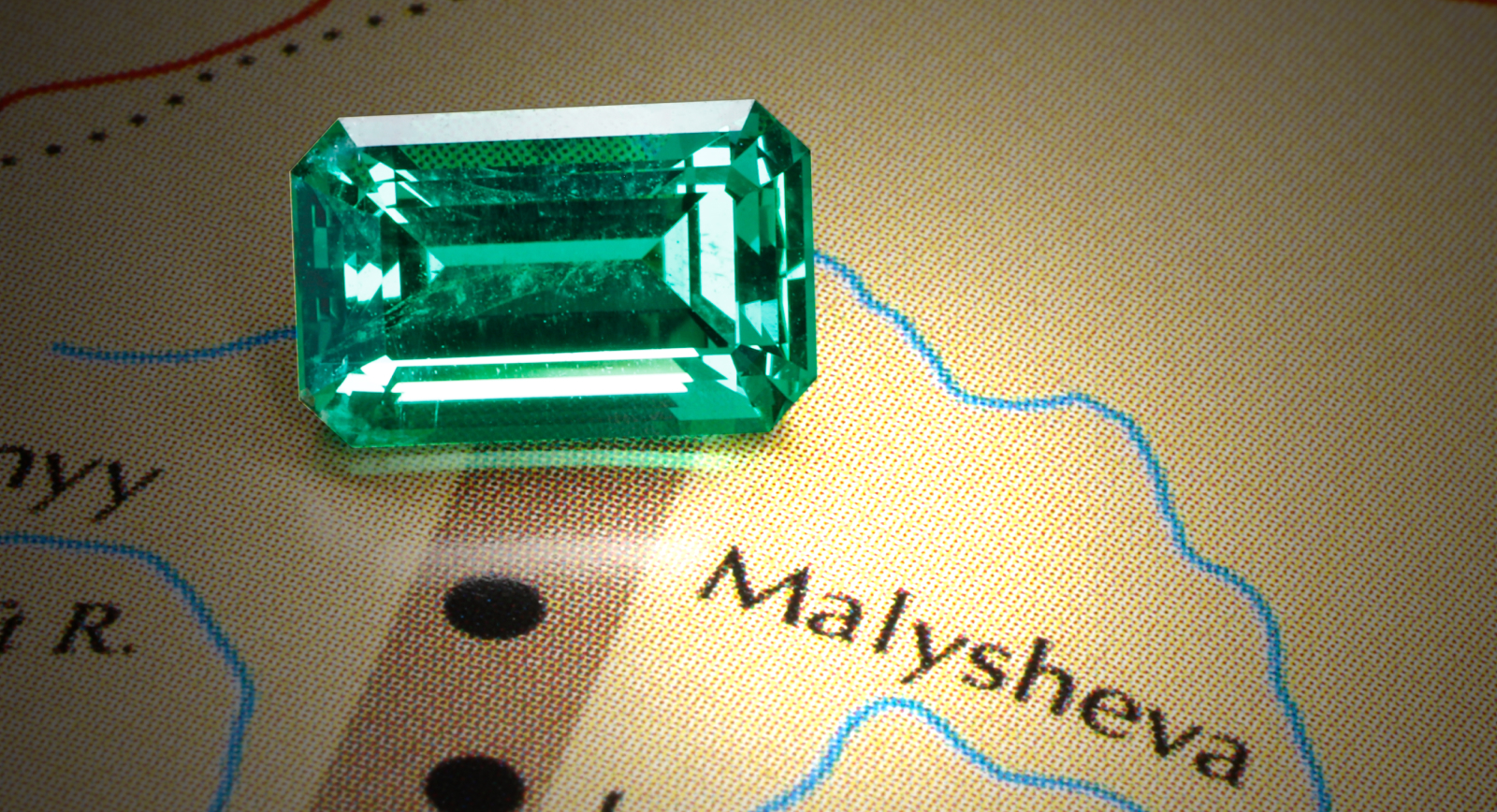
Russian Rarities: Tsarina Jewels on Precious Gems from the Ural Mountains
If you know the way that prefixes like Colombia, Brazil, and Kashmir affect the value of gemstones, then I am sure your interest will be piqued by minerals from the Ural Mountains. This north-south stretch of peaks is the source of Russia’s finest minerals, including alexandrites, demantoid garnets and emeralds, which are coveted across the world. To find out more, I met an expert in rare gems from the Urals – Tsarina Jewels – to discover what makes its mine-to-market approach so special.
On the boundary line between the continents of Europe and Asia, the Urals rise above the horizon much like any other mountain range. What makes this stretch of peaks and troughs different, however, is what lies beneath, specifically a rare palette of minerals, including colour-change alexandrite, vibrant green demantoid garnets, and bluish-green emeralds. Because of their scarcity, these Russian-origin gemstones are in high demand among collectors, and one name known by many of these mineral connoisseurs is Tsarina Jewels. This business, with connections in Russia and Bangkok, Thailand, has perhaps the largest inventory of rare Ural gems on the market. It is known for having a mine-to-market approach, including a gemstone faceting factory so that it can transform the small amounts of rough it unearths into exceptional stones for independent buyers or its own finished jewellery pieces.
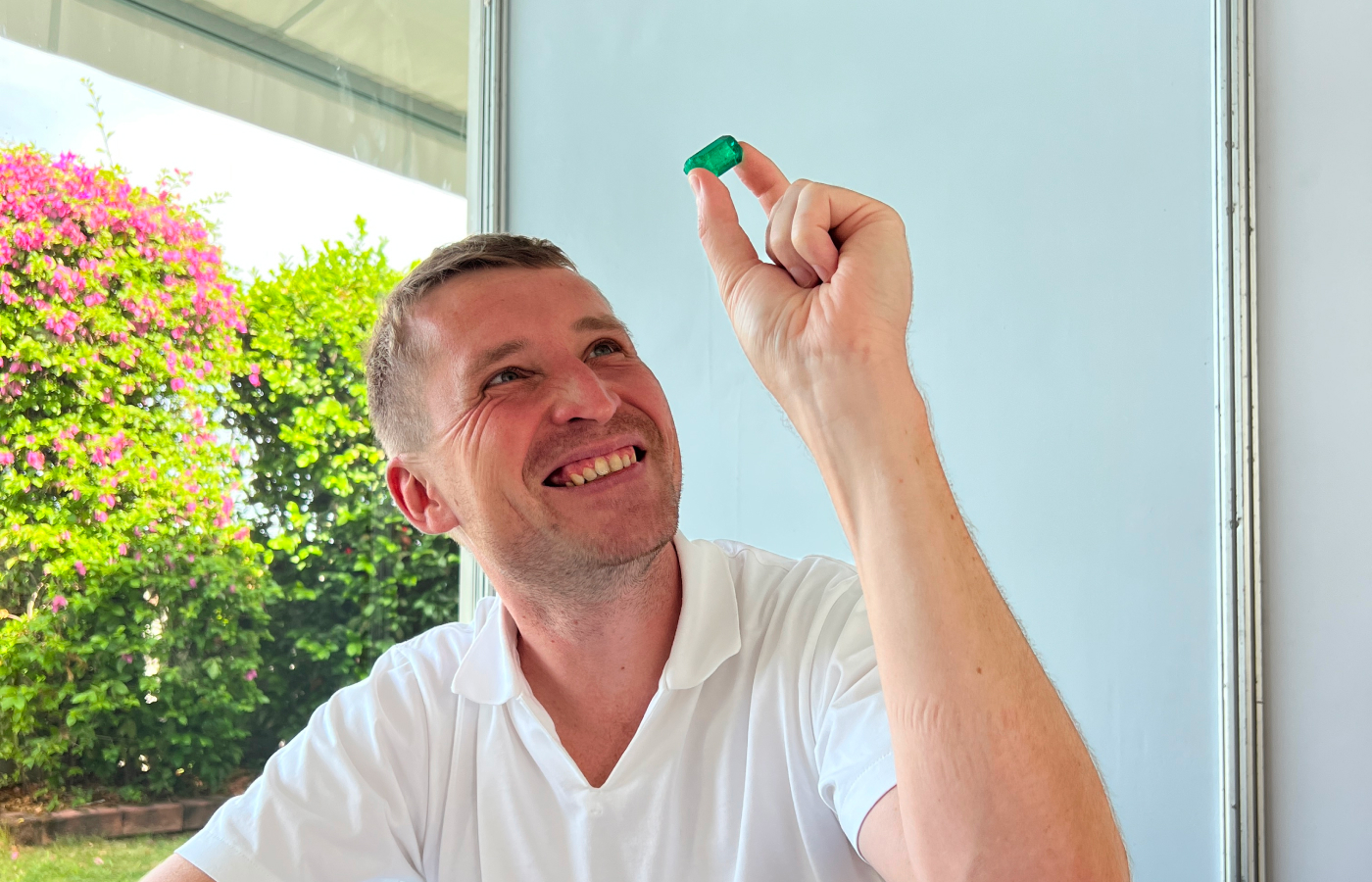
Alexey Burlakov of Tsarina Jewels
Recently, I had the opportunity to speak to Tsarina Jewels’ Alexey Burlakov, who established the business as it is today with Anna Safronova, with the aim of manufacturing and wholesaling gemstones mined in Russia. Between them, they have more than 30 years of collective experience in the gemstone industry and a wealth of knowledge about Russian output, including mining locations, gemmological properties, what’s in demand among collectors and much more. The company’s jewellery also draws inspiration from Imperial Russia, with a classical and grand aesthetic that puts unique, one-of-a-kind gemstones at the heart of each piece. Importantly, these stones are predominantly natural, treatment-free, and cut for clarity through the “Precision Russian Cut” that honours traditional lapidary techniques. Yield is sacrificed for ultimate, eye-clean beauty, which is especially notable considering the rarity of material in sizes greater than a single carat.
Before we dive into the trio of precious stones that Tsarina Jewels is known for – alexandrites, demantoid garnets, and emeralds – we must do a quick-fire history lesson. Both alexandrite (the colour-change variety of chrysoberyl) and demantoid garnet were first discovered in the Ural Mountains in the 1830s and 1860s, respectively. “Production is very limited, with an active mining phase lasting only four months annually due to severe cold weather conditions,” Alexey tells me. Russian alexandrite is famously tricky to procure… or should that be impossible? It is mined as a by-product of emerald, largely because it is found in such small quantities that dedicating a mining enterprise to alexandrite wouldn’t be economically viable. Alexey describes it as an “unpredictable” gem, which also adds to the air of mystery! He continues: “The limited production of alexandrite deposits contributes to its scarcity, enhancing its desirability among collectors. The gem’s rarity, distinctive optical properties, and ties to Russian history collectively make Russian alexandrite a genuine gemstone connoisseur’s dream.”
In a world where lots of things are described as ‘rare’, let’s put gem-quality Russian alexandrite into context. Alexey notes that 2023 was a good year because it yielded less than five stones that are more than one carat each. The remainder are in the 0.2-0.3 carat size range. Knowing this, take a look at the Tsarina Jewels website, where you will find an untreated 2.63-carat oval-shaped alexandrite with excellent colour change. It really helps to put the extraordinary elusiveness of these stones into perspective.
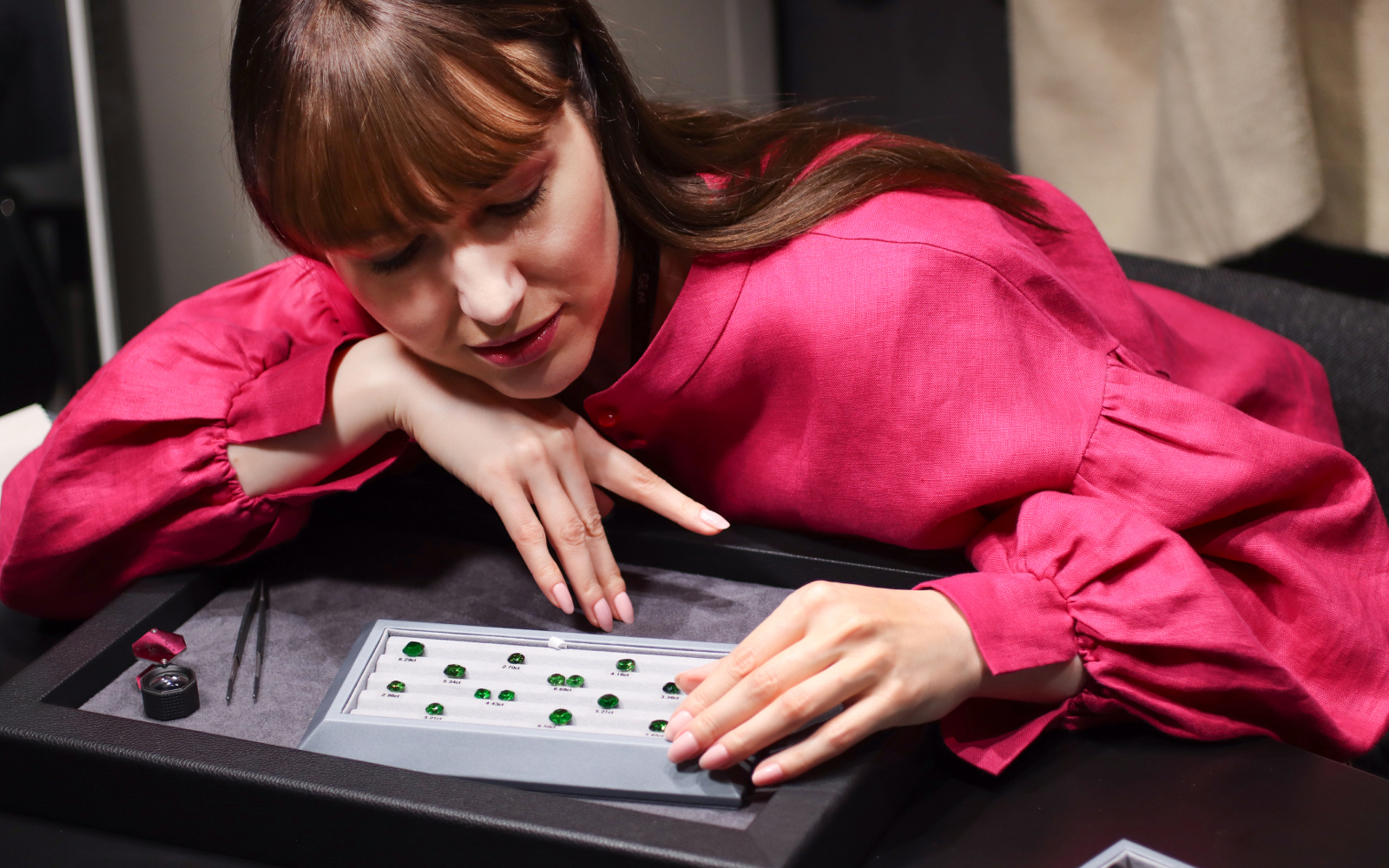
Katerina Perez takes a closer look at Tsarina Jewels' selection of Russian demantoid garnets
Moving on to Russian emerald, this was also discovered in the 19th century. The mining location, known as the Malysheva deposit, is on such a scale as to rival any emerald mining operation worldwide. Its green cousin – the Russian demantoid garnet – is described as a “very niche gem” thanks to its vibrant colour, historical ties, scarcity and a special feature that you may have read about here: the horsetail inclusion. Similar to alexandrite, finding gem-quality demantoids in larger sizes is challenging, to say the least. Finding “nice quality over two carats is rare,” according to Alexey, which is why he considers anything in the five-to-six-carat range as an irreplaceable treasure. If you are in the market for a larger Russian demantoid, there is no time like the present. There is no waiting around or predicting the supply of this material; you simply have to dive in when a unique specimen enters the Tsarina Jewels inventory.
Therefore, despite there being other global deposits for all three gems, there’s something about that ‘Russian’ prefix that makes stones more desirable, like Colombian emeralds, Kashmir sapphires, Paraiba tourmalines, and so forth. And this origin also has an influence on gemmological factors, such as colour and inclusions. Due to his constant proximity to Russian gems, Alexey can sometimes spot the difference between demantoids from the Urals and other locations due to the intensity and brightness of their green hue. He notes that demantoids from Madagascar and Pakistan have a yellowish tone, while Iranian stones are usually deeper and darker green. Russian demantoid is also special because of the presence of horsetail inclusions, which are a common (but not foolproof) sign that a gem has been mined in the Urals. You can see an incredible example of a horsetail in this 2.18-carat demantoid on the Tsarina Jewels website.
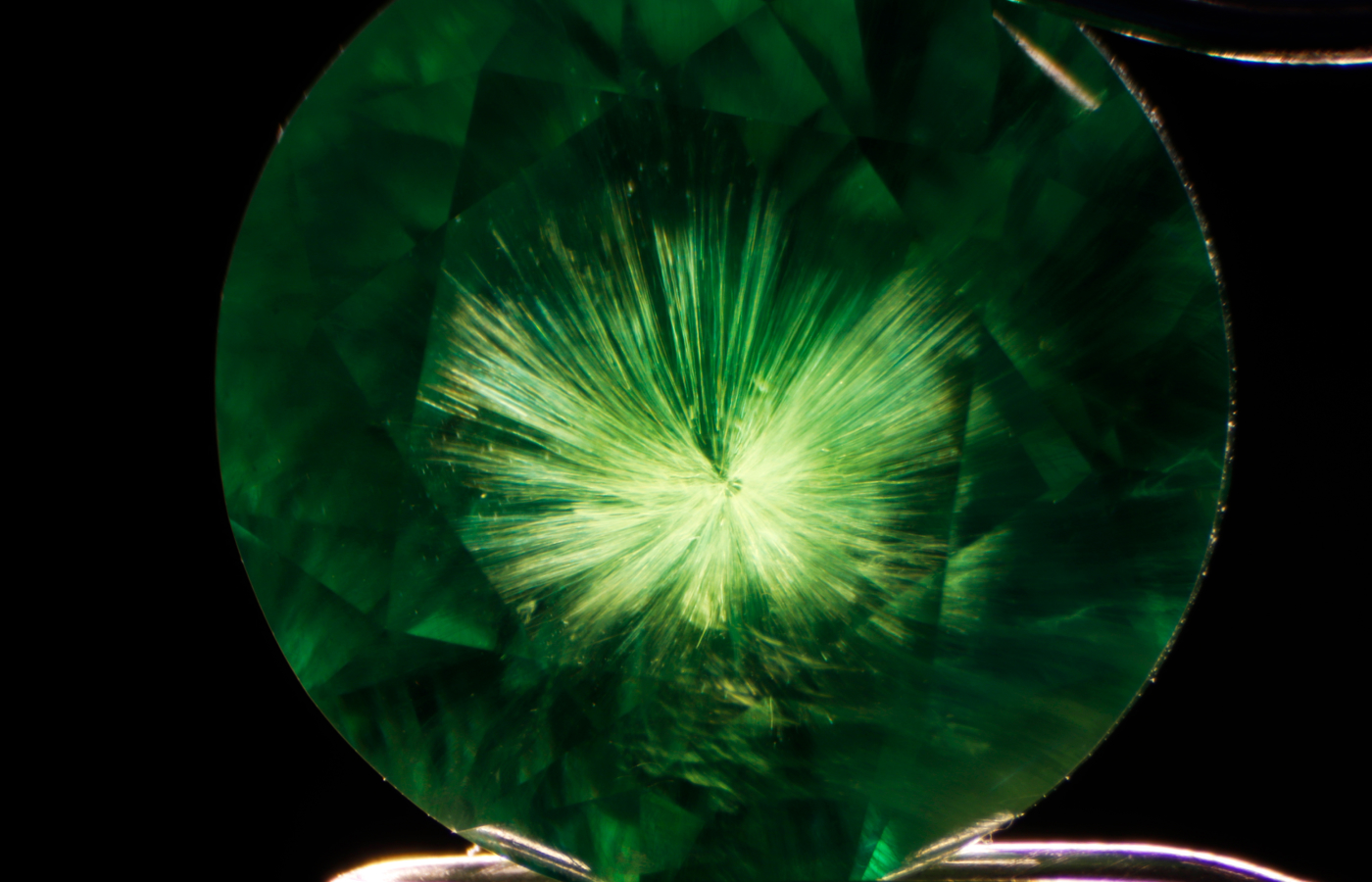
An incredible horsetail inclusion in Russian demantoid garnet, photographed by Tsarina Jewels
“For many years, until some recent research, it was considered that a demantoid with a horsetail had Russian origin,” Alexey explains. “Recently, they found some samples that have horsetails from Iran and Pakistan, but they all look different. If you see a Russian horsetail, it looks like a firework [flared lines of chrysotile and a central opaque crystal core], but from other origins, it looks like one line or irregular lines that don’t form shapes.” Knowing all this, Tsarina Jewels seeks to offer its customers large, vibrant green gems with excellent eye-clean clarity, combined with a beautiful horsetail inclusion under the loupe. No wonder they are loved by jewellers and gemmologists in equal measure!
Alexandrites from Russia are widely thought to possess the most striking colour-change properties, so much so that they are described as being an “emerald by day, ruby by night”. This shift is caused by the light source – starting with a green hue in daylight or fluorescent light and transitioning to a brown-purplish red in incandescent light from a bulb or candle. “In the battle of colour-change intensity among alexandrites from different origins, the Russian ones emerge victorious,” Alexey adds. Lastly, let’s talk about Russian emeralds, which Tsarina Jewels sets in covetable creations, such as these earrings with 6.42 carats of verdant gems. Although laboratories can distinguish emeralds from different regions by their chemical composition, Russian emeralds have a tell-tale bluish tint that separates them (often, but not always) from other stones. To its credit, Tsarina Jewels prioritise no-oil, eye-clean emeralds to distinguish its mine-to-market supply, with Alexey noting that “they tend to be cleaner than others on the market”.
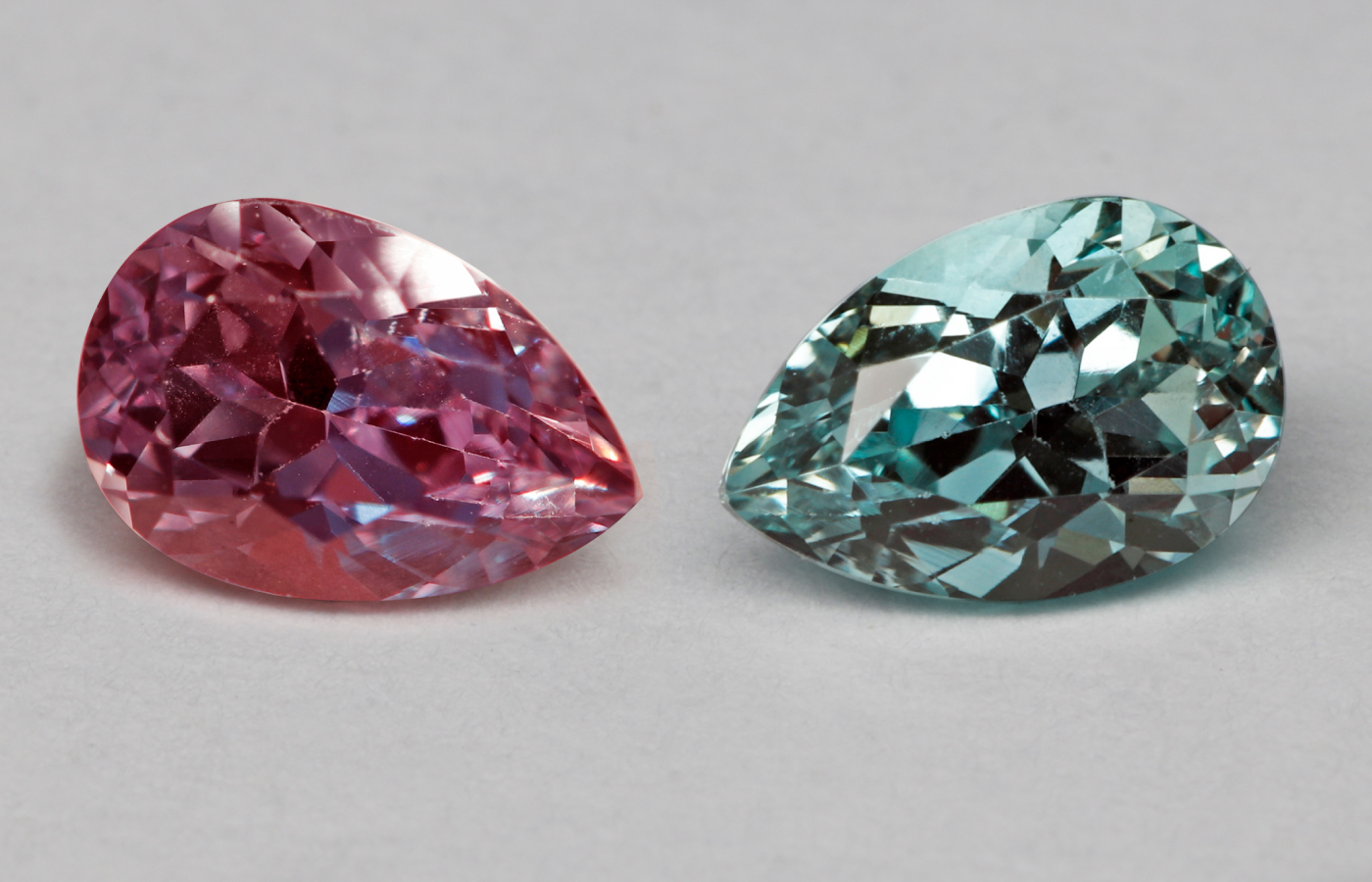
The iconic colour-change effect of Russian alexandrites, sourced by Tsarina Jewels
Finally, you may be interested to know where I had this insightful conversation with Tsarina Jewels. Although the company has long focused its trading attention on the Asian market, including shows in Hong Kong and Japan, I was pleased to meet the team at GemGenève in Switzerland, as it seeks to showcase its rarities to a wider audience. It is exciting to see this trio of niche gemstones garner attention outside of the ‘typical’ bubble of collectors and gemmologists. As Alexey notes, these are gems “for people who look for something different,” and I am pleased to count myself among those searchers.

WORDS
Katerina Perez is a jewellery insider, journalist and brand consultant with more than 15 years’ experience in the jewellery sector. Paris-based, Katerina has worked as a freelance journalist and content editor since 2011, writing articles for international publications. To share her jewellery knowledge and expertise, Katerina founded this website and launched her @katerina_perez Instagram in 2013.
Related Articles
Latest Stories
Add articles and images to your favourites. Just

Century of Splendour:Louis Vuitton Awakened Hands, Awakened Minds Chapter II
Creative Director Francesca Amfitheatrof offers her unique interpretation of a pivotal period in France’s history, marked by the French Revolution, the Napoleonic era, and the rise of industrialism
Jewels Katerina Perez Loves
Continue Reading
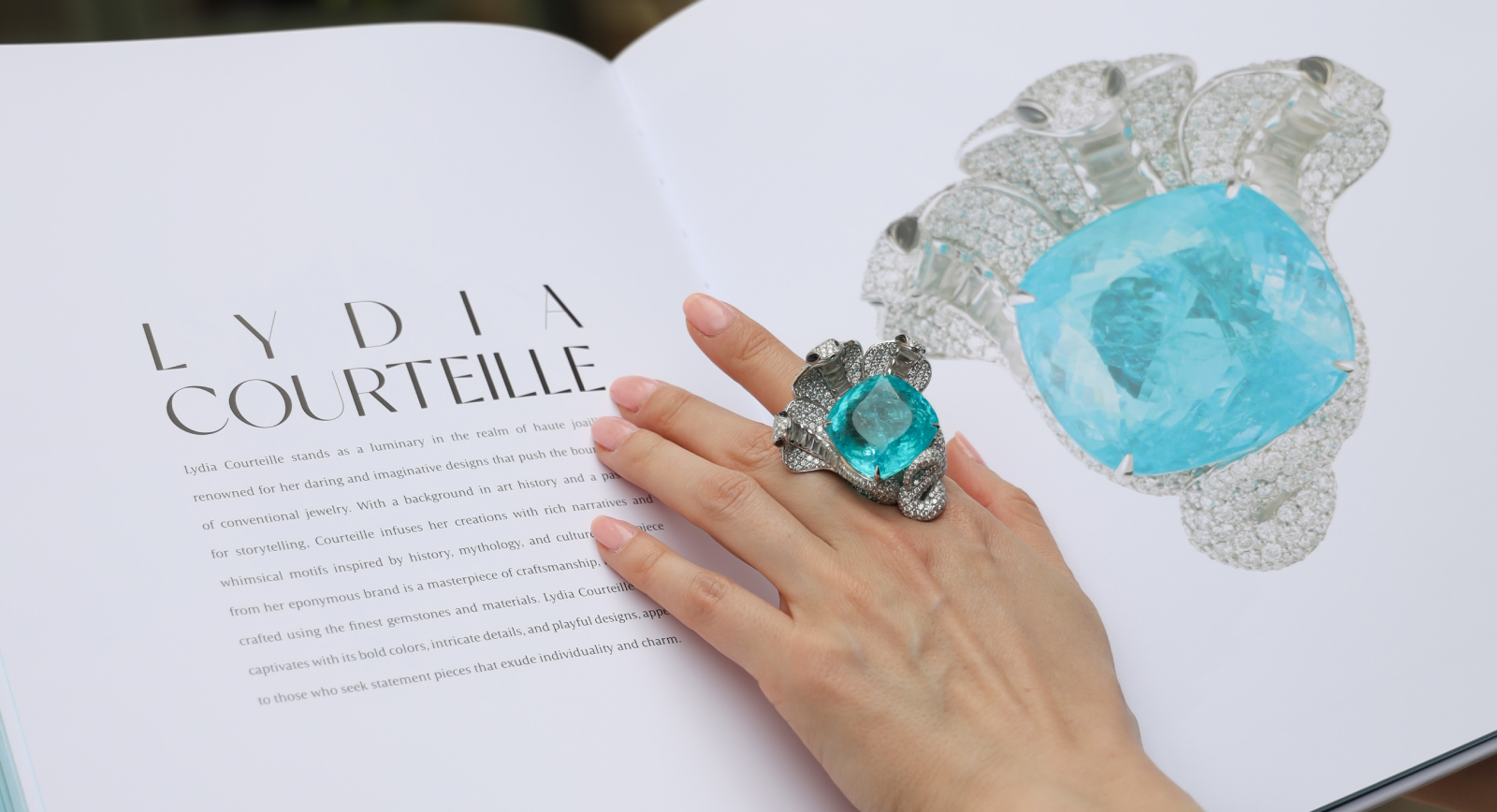
Writing Adventures:Co-Authoring the Book
Paraiba: The Legacy of a Color
Brand Focus: Louis Vuitton
Jewellery Insights straight to your inbox
